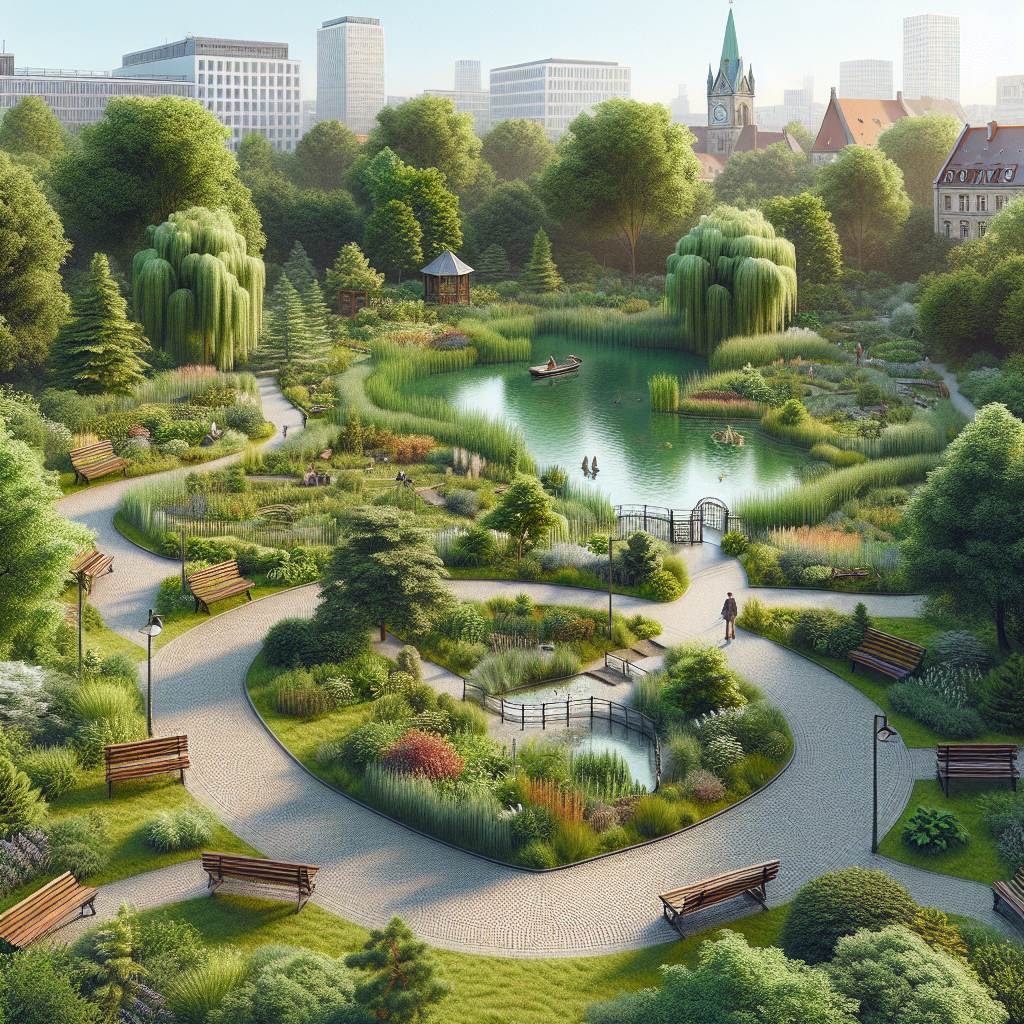Tucked away in the bustling metropolis of Berlin, Theodor Wolff Park stands as a refreshing sanctuary, akin to finding a rare gem in a bustling marketplace. Located in the vibrant district of Kreuzberg, this park offers not just a view of nature in an urban setting, but also a glimpse into the past and present of a city always on the move. Developed primarily in the 1960s, it honors Theodor Wolff, an influential liberal journalist who played a crucial role in shaping modern journalism in Germany. But why does a park, named after a journalist, capture the imagination of so many today?
In a world where urban spaces are often dominated by concrete and steel, Theodor Wolff Park offers a respite, a moment to breathe. Its green spaces are punctuated with trees that tell stories older than some of the buildings surrounding them. The air, fragrant with the smell of blossoms, invites locals and visitors alike to escape their screens and reconnect with nature. For the people of Kreuzberg, it’s a place of community—a spot where locals gather for spontaneous football matches, families enjoy leisurely picnics, and artists find solitude to sketch or paint.
Kreuzberg is known for its multicultural flair, and the park reflects this fusion. Bilingual chatter may grace the ears of those who visit, ranging from German and Turkish to English, a testament to the diversity found in this neighborhood. The park plays its part as a backdrop, hosting events that are as varied as its visitors. It’s not uncommon to stumble upon an impromptu music session or a public reading that has gathered a curious crowd. Theodor Wolff Park is more than just a green space; it's a living canvas for Kreuzberg’s dynamic culture.
Honoring its namesake, Theodor Wolff, the park inspires reflection on freedom of expression and the resilience of independent thought. Born in 1868, Wolff was an outspoken advocate for liberal democracy and faced opposition from authoritarian figures of his time. In the face of adversity, he maintained journalistic integrity, a principle that resonates deeply in our current tumultuous times. Walk through the park, and it’s easy to imagine Wolff himself would have found solace here, perhaps pondering his next great article amidst the whispers of rustling leaves.
For those who call Kreuzberg home, the park is a vital artery in the neighborhood. The area has seen waves of change, from its days as a secluded part of West Berlin to its present as a hub of cultural activity. However, not all change has been embraced by locals. Gentrification has made its mark, sparking debates about the displacement of longtime residents and the essence of cultural identity. While some argue that development can enhance the neighborhood’s appeal and amenities, others worry about losing the spirit that makes Kreuzberg uniquely vibrant. Theodor Wolff Park, with its combination of history and inclusivity, stands as a reminder of the community’s strength and desire to preserve its diverse legacy.
Those outside of the neighborhood may see the park as merely a scenic location. Still, it's important to understand the deeper significance it holds for many. It’s common ground that has, time and again, shown its ability to unite diverse people under a shared banner of common humanity. In a hectic world, filled with conflicting opinions and interests, spaces like Theodor Wolff Park become emblematic of what is possible when people choose unity over division.
As we tread carefully into the future, mindful of environmental impacts and social responsibilities, parks like Theodor Wolff serve as more than just green lungs for a city. They are symbols of the balance we strive to achieve between progress and preservation. Theodor Wolff Park encourages us to question the status quo and imagine novel ways to coexist with each other and the planet. It encourages us to plant not just physical trees, but seeds of hope and understanding in our social landscapes.
Each visitor will take away something different from Theodor Wolff Park. For some, it’s a place for morning jogs, a routine escape from digital overstimulation. For others, it’s a classroom under open skies, revealing lessons about resilience and history. Whether seen as a sanctuary for personal reflection or a microcosm of community diversity, it invites introspection and a nod to the enduring impact of thoughtful journalism.
Though we live in a digital age keen on fast-paced innovation, there’s an untold value in spaces that pause the chaos, inviting us to slow down and engage with the natural world and each other. Theodor Wolff Park, in its role as more than just a patch of green in the middle of Berlin, achieves this, reminding all who visit of the timeless balance between nature, history, and community.

